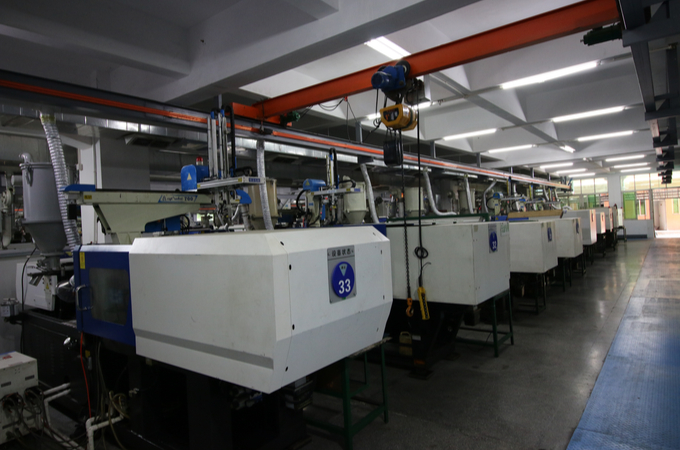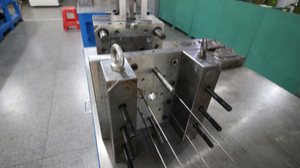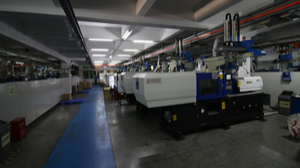 Injection molding offers an extremely versatile range of manufacturing options, as the nature of the process means that it’s suitable for a host of part and product designs and types. Beyond the standard injection molding process, even more versatility and efficiency can be achieved via two-component injection molding. As the name suggests, two-component injection molding involves using more than one material in the molding of one part. This differs from the more typical single-component injection molding process, where only one base resin is injected into a mold.
Injection molding offers an extremely versatile range of manufacturing options, as the nature of the process means that it’s suitable for a host of part and product designs and types. Beyond the standard injection molding process, even more versatility and efficiency can be achieved via two-component injection molding. As the name suggests, two-component injection molding involves using more than one material in the molding of one part. This differs from the more typical single-component injection molding process, where only one base resin is injected into a mold.
Two-component injection molding can be achieved in several ways, with each method yielding different results and effects. Below, we’ll take a look at each:
Mixed materials: In what might be considered the simplest form of two-component injection molding, two materials can be fed into the injection molding machine simultaneously and mixed as they are heated. This method could be used for aesthetic purposes. Mixing, for example, a dye with the resin to achieve a different color or a more attractive finished appearance. It could also be used to achieve a different physical property than just one resin would offer. For example, mixing a harder resin in to strengthen a piece made primarily from a softer plastic. 
Co-injection molding: In co-injection molding, two full material shots are injected into the cavity, one right after the other, resulting in the materials hardening around each other while becoming fully bonded. This process is useful for creating, say, a soft rubber exterior around a hard plastic core.
Bi-injection molding: In this process, different materials are fed into a mold cavity at different points, through different gates. They begin to harden before their meeting point within the cavity, resulting in a layered effect. In co-injection molding, the materials are not intended to physically mix together. The meeting point of the two materials and, thus, the appearance and function of the finished piece, can be adjusted by fine-tuning the injection speed of each material.
Multi-shot molding: In multi-shot molding, a “layering” effect is achieved by injecting partial shots of material in sequence into the mold cavity. The materials neither mix nor harden around one another. Instead, they are “stacked” into the finished piece. Multi-shot molding is also known as sequential molding.
Overmolding: In overmolding, multi-component pieces are constructed through an “add-on” type of process, where one component is constructed and allowed to fully cool and harden, and then used as a base or core as another portion of the piece is molded around (or “over”) it. Overmolding allows for extensive flexibility with materials and construction, since the core piece does not even necessarily have to be injection molded (or plastic). For instance, a rubber grip can be overmolded around a metal piece.
When Is the Two-Component Process Advantageous?
Two-component injection molding can be the right choice in a number of scenarios, depending on the requirements and design of the piece or product.
Some situations include:
- Custom resin formulations: As mentioned above, two-component molding can help to fine-tune or add properties to a material that may not otherwise exist. In addition to the strengthening example above, mixed-material molding can help achieve, for example, greater heat or UV resistance. Or, mixed-material molding can increase flexibility in a formulation.
- Aesthetic considerations: If a certain appearance is required for a product, two-component molding can be a faster and more efficient way of achieving that (through several of the methods above), instead of painting or otherwise finishing a single-component injection molded product. The two-component process can also yield higher quality in such scenarios.
- Highly complex part designs: Overmolding can be an ideal solution for complex or multi-component part designs, where a single mold may be cost-prohibitive or impossible to manufacture. With overmolding, relatively simple pieces can be combined to create more complex parts, at a much greater cost-efficiency.
- Assemblies: Similar to the above, overmolding can be an effective alternative to physical assembly of complex parts. Assemblies created via overmolding instead of as a secondary process will often be more reliable and of higher quality.
- “Core” constructions: Overmolding and bi-injection molding are both an ideal way of creating products where distinct “interior” and “exterior” elements are a requirement, such as a hard, rigid interior for structural integrity; and a softer material exterior for grip, protection and/or aesthetic purposes.
- Any application requiring distinct components, appearances or material qualities: Two-component molding can be a highly efficient way of effectively combining two processes into one for any project that would otherwise require assembly and other secondary and finishing processes.
- Are There Any Disadvantages to Using the Two-Component Process?
 As with most any manufacturing process, two-component injection molding isn’t the right answer for every application. In scenarios where certain material properties are required — for example, medical or food applications — two-component molding may compromise the critical safety qualities of the core material. Two-component molding also shouldn’t be used when only one component will suffice. For example, with purely functional products such as mechanical components and other commodities. In other words, two-component molding shouldn’t be sought just because it’s a possibility. Unnecessary addition of components and thus, resource expenditure, results in wasted production efficiency.
As with most any manufacturing process, two-component injection molding isn’t the right answer for every application. In scenarios where certain material properties are required — for example, medical or food applications — two-component molding may compromise the critical safety qualities of the core material. Two-component molding also shouldn’t be used when only one component will suffice. For example, with purely functional products such as mechanical components and other commodities. In other words, two-component molding shouldn’t be sought just because it’s a possibility. Unnecessary addition of components and thus, resource expenditure, results in wasted production efficiency.
Why RevPart?
At RevPart, we specialize in helping our customers find the best solution for their product, with innovation, quality and efficiency as our core goals for you. Our extensive prototyping capabilities and services — including injection molded prototypes — mean that we can work with you in a cost-efficient manner to fine-tune the best design for your product, including two-component molding methods. The advantages of injection molding prototypes allow us to work together to zero in on how the full production process eventually can and should work — a benefit that isn’t available through other methods of prototyping.
With extensive knowledge and experience with materials and various methods of injection molding and other manufacturing, we offer our expertise in the service of creating the best possible product for you.


